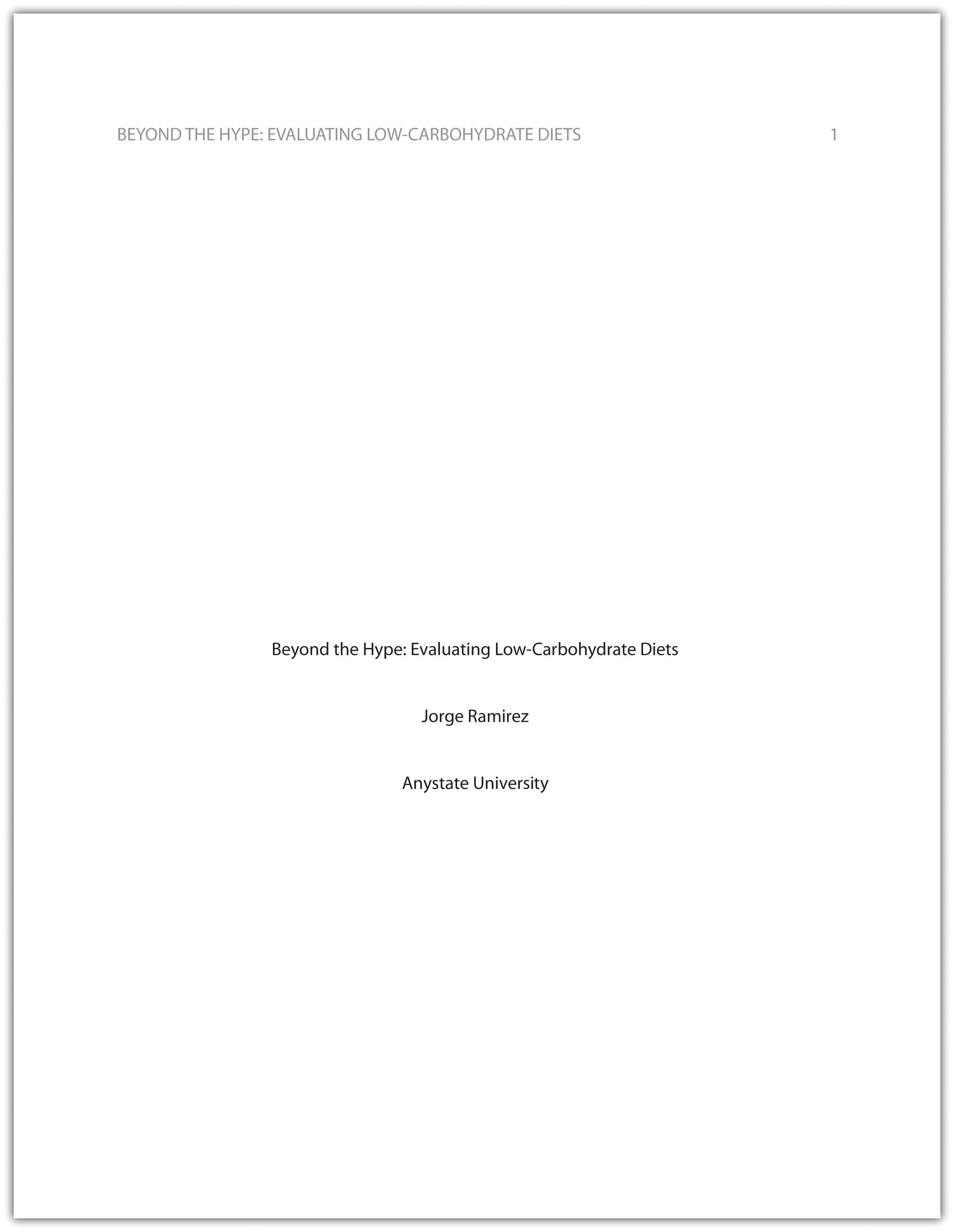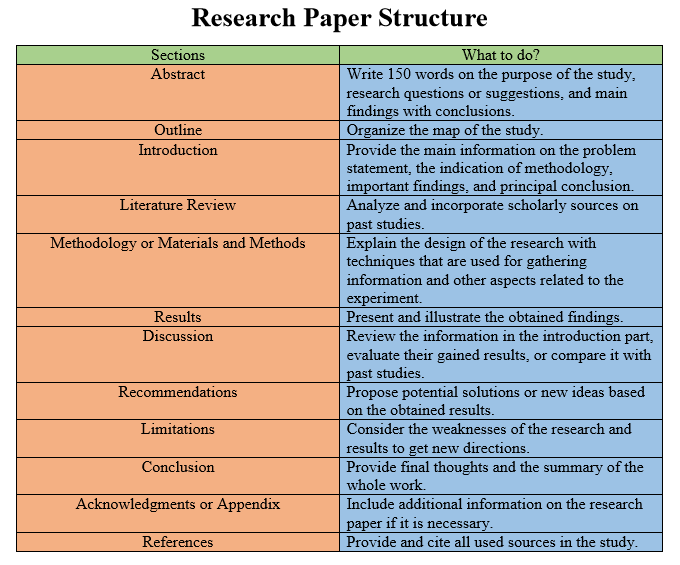
You can make the connection between your problem and the existing research using phrases like the following.
For example, the following hypothesis might respond to the research question above:
If included, the overview should be concise, direct, and written in the present tense.
The introduction to a research paper is where you set up your topic and approach for the reader. It has several key goals:
Empirical paper: Relate to the literature
- This paper will first discuss several examples of survey-based research into adolescent social media use, then will go on to …
- This paper first discusses several examples of survey-based research into adolescent social media use, then goes on to …
- Present your topic and get the reader interested
- Provide background or summarize existing research
- Position your own approach
- Detail your specific research problem
- Give an overview of the paper’s structure
Don’t feel that you have to write the introduction first. The introduction is often one of the last parts of the research paper you’ll write, along with the conclusion.

Research papers should be reserved for high school and above, as the student’s brain needs time to develop the skills necessary to write this type of assignment. However, around 7th and 8th grade, you can also assign a hybrid research project. The hybrid project will include all the components of a research report, but will add in a page or so where the student explains how the material affected him. This type of paper will ease the student into writing the more complex research paper.
I personally recommend beginning to assign mini-research reports during the late elementary years, once the student’s reading and writing skills are firmly in place. As the student progresses, you can add to the length requirements of the research report, increase the frequency of the assignment or advance the complexity of the material being studied.
On the other hand, the research paper contains the student’s analysis and opinion of a subject. He will still do a fair amount of research and his paper should still include some summary information. However, the writer will also offer his thoughts on what he has learned, and he will use quotes and authoritative opinions to back up his claims. This means that the student will also need to use some form of citation to show from where their quotes and support material have come, which will add to the complexity of this assignment.
These reports should take anywhere from a week to a month to complete. The 3 to 5 paragraphs of the report should be written in an informational tone, devoid of opinion. It should be concise and to the point. For the research report, the student is basically delving into a topic, organizing the material he has found and sharing what he has learned in his own words.
What is a Research Paper?
A research report is basically a summary of what the student has learned through their exploration of a topic in books, encyclopedias or the Internet. The student will read the desired material, such as several non-fiction books on a specific subject matter, and organize the information. Then, they will summarize what they have learned in a well-thought out manner.
The term research report and research paper are often used interchangeably. Although both of these assignments require research, they do differ in several ways. In a nutshell, the student writing a research report does some research and churns out facts, while the student writing the research paper analyzes a topic and forms an opinion.
So, should you assign a research report or research paper to your student?
These papers should take anywhere from 6 weeks to several months to complete. A research paper must include a thesis statement which causes the student to form and defend an opinion about the material. The completed paper should be clear, comprehensive and at least 6 to 8 pages in length. It should touch on why he chose the topic and how it affects the writer as well as thoroughly explain what he has found out about the subject.

Furthermore, producing a letter-perfect APA-style paper need not be burdensome. Yes, it requires careful attention to detail. However, you can simplify the process if you keep these broad guidelines in mind:
- Section headings use centered, boldface type. Headings use title case, with important words in the heading capitalized.
- Subsection headings use left-aligned, boldface type. Headings use title case.
- The third level uses left-aligned, indented, boldface type. Headings use a capital letter only for the first word, and they end in a period.
- The fourth level follows the same style used for the previous level, but the headings are boldfaced and italicized.
- The fifth level follows the same style used for the previous level, but the headings are italicized and not boldfaced.
- AMA (American Medical Association) for medicine, health, and biological sciences
- APA (American Psychological Association) for education, psychology, and the social sciences
- Chicago—a common style used in everyday publications like magazines, newspapers, and books
- MLA (Modern Language Association) for English, literature, arts, and humanities
- Turabian—another common style designed for its universal application across all subjects and disciplines
- Set the top, bottom, and side margins of your paper at 1 inch.
- Use double-spaced text throughout your paper.
- Use a standard font, such as Times New Roman or Arial, in a legible size (10- to 12-point).
- Use continuous pagination throughout the paper, including the title page and the references section. Page numbers appear flush right within your header.
- Section headings and subsection headings within the body of your paper use different types of formatting depending on the level of information you are presenting. Additional details from Jorge’s paper are provided.
General Formatting Guidelines

Addiction researchers caution that “junk food cannot be considered addictive in the same way that we think of psychoactive drugs as addictive” (Epstein, 2010, p. 137).
The brief citations included in the body of your paper correspond to the more detailed citations provided at the end of the paper in the references section. In-text citations provide basic information—the author’s name, the publication date, and the page number if necessary—while the references section provides more extensive bibliographical information. Again, this information allows your reader to follow up on the sources you cited and do additional reading about the topic if desired.
- The name(s) of the author(s) or institution that wrote the source
- The year of publication and, where applicable, the exact date of publication
- The full title of the source
- For books, the city of publication
- For articles or essays, the name of the periodical or book in which the article or essay appears
- For magazine and journal articles, the volume number, issue number, and pages where the article appears
- For sources on the web, the URL where the source is located

The structure of research papers depends on assignment requirements. In fact, when students get their assignments and instructions, they need to analyze specific research questions or topics, find reliable sources, and write final works. Basically, the structure of research papers consists of the abstract, outline, introduction, literature review, methodology, results, discussion, recommendations, limitations, conclusion, acknowledgments, and references. However, students may not include some of these sections because of assigned instructions that young scholars have and specific types of research papers. For instance, if instructions of papers do not suppose to conduct real experiments, the methodology section can be skipped because of the data absence. In turn, the structure of the final work consists of:
Discussion is a section of a research paper where scientists review the information in the introduction part, evaluate gained results, or compare it with past studies. In particular, students and scholars interpret gained data or findings in appropriate depth. For example, if results differ from expectations at the beginning, scientists should explain why that may have happened. However, if results agree with rationales, scientists should describe theories that the evidence is supported.
A research paper is a product of seeking information, analysis, human thinking, and time. Basically, when scholars want to get answers to questions, they start to search for information to expand, use, approve, or deny findings. In simple words, research papers are results of processes by considering writing works and following specific requirements. Besides, scientists research and expand many theories, developing social or technological aspects in human science. However, in order to write relevant papers, they need to know a definition of the research, structure, characteristics, and types.
Methodology or Materials and Methods covers explanations of research designs. Basically, techniques for gathering information and other aspects related to experiments must be described in a research paper. For instance, students and scholars document all specialized materials and general procedures. In this case, individuals may use some or all of the methods in further studies or judge the scientific merit of the work. Moreover, scientists should explain how they are going to conduct their experiments.
The Structure of a Research Work
References mean a section where students, scholars, or scientists provide all used sources by following the format and academic rules.
Basically, typical research works depend on assignments, the number of sources, and the paper’s length. So, a typical research paper is usually a long essay with the analyzed evidence. For example, students in high school and colleges get such assignments to learn how to research and analyze topics. In this case, they do not need to conduct serious experiments with the analysis and calculation of data. Moreover, students must use the Internet or libraries in searching for credible secondary sources to find potential answers to specific questions. As a result, students gather information on topics and learn how to take defined sides, present unique positions, or explain new directions. Hence, typical research papers require an analysis of primary and secondary sources without serious experiments or data.
In general, the length of assignments can be different because of instructions. For example, there two main types of research papers, such as typical and serious works. Firstly, a typical research paper may include definitive, argumentative, interpretive, and other works. In this case, typical papers are from 2 to 10 pages where students analyze research questions or specific topics. Then, a serious research study is the expanded version of typical works. In turn, the length of such a paper is more than 10 pages. Basically, such works cover a serious analysis with many sources. Therefore, typical and serious works are two types of research papers.

Acknowledgments or Appendix may take different forms from paragraphs to charts. In this section, scholars include additional information on a research paper.
References mean a section where students, scholars, or scientists provide all used sources by following the format and academic rules.
Any type of work must meet some standards. By considering a research paper, this work must be written accordingly. In this case, the main characteristics of research papers are the length, style, format, and sources. Firstly, the length of research works defines the number of needed sources to analyze. Then, the style must be formal and covers the impersonal and inclusive language. In turn, the format means academic standards of how to organize final works, including its structure and norms. Finally, sources and its number define works as research papers because of the volume of analyzed information. Hence, these characteristics must be considered during writing research papers.
Basically, typical research works depend on assignments, the number of sources, and the paper’s length. So, a typical research paper is usually a long essay with the analyzed evidence. For example, students in high school and colleges get such assignments to learn how to research and analyze topics. In this case, they do not need to conduct serious experiments with the analysis and calculation of data. Moreover, students must use the Internet or libraries in searching for credible secondary sources to find potential answers to specific questions. As a result, students gather information on topics and learn how to take defined sides, present unique positions, or explain new directions. Hence, typical research papers require an analysis of primary and secondary sources without serious experiments or data.
Research Characteristics
Literature Review is needed for the analysis of past studies or scholarly articles to be familiar with research questions or topics. Hence, this section summarizes and synthesizes arguments and ideas from scholarly sources without adding new contributions. In turn, this part is organized around arguments or ideas, not sources.
In general, the length of assignments can be different because of instructions. For example, there two main types of research papers, such as typical and serious works. Firstly, a typical research paper may include definitive, argumentative, interpretive, and other works. In this case, typical papers are from 2 to 10 pages where students analyze research questions or specific topics. Then, a serious research study is the expanded version of typical works. In turn, the length of such a paper is more than 10 pages. Basically, such works cover a serious analysis with many sources. Therefore, typical and serious works are two types of research papers.
Recommendations take its roots from a discussion section where scholars propose potential solutions or new ideas based on obtained results in a research paper. In this case, if scientists have any recommendations on how to improve this research so that other scholars can use evidence in further studies, they must write what they think in this section.
Outline serves as a clear map of the structure of a research study.
